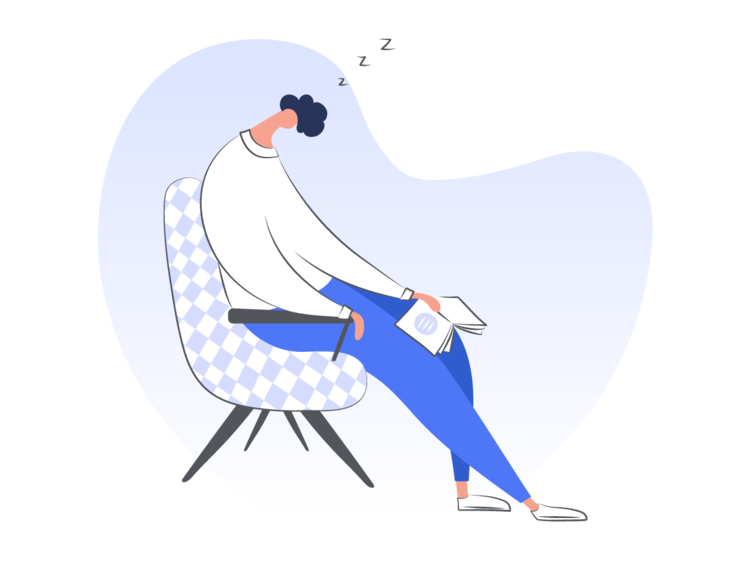Assessing the health of your workplace is difficult. There are many factors that influence the health of wellbeing of employees ranging from stress and sleep quality, to financial health, exercise and diet. Although a company can and should give employees resources that offer support on these issues, their effectiveness can still depend largely on the individuals circumstances.
A key responsibility for employers is to ensure that the workplace is not contributing to individual levels of stress. By optimizing the workplace environment and encouraging ongoing support from managers, employers can manage mental health risk effectively while improving the quality of life for employees.
To ensure your workplace meets an adequate level of mental health and safety, assess it using the following checklist, modified from SafeWork South Australia.
MENTALLY HEALTHY WORKPLACE CHECKLIST
Does the workplace encourage open and supportive discussions on work-related stressors?

Image Source: Alex Pravda
It is very important that a workplace has a continuous outlet for employees to deal with their stress in a healthy way. The buildup of stress is a risk factor for employee burnout and the development or worsening of a mental health condition related to workplace factors.
Some ways that your workplace can encourage an open conversation about work-related stress is to make it a topic for weekly or monthly manager meetings. This way, you can ensure timely response and management of the employees needs. Another way is to offer an early intervention Employee Assistance Program.
Uprise for example, assesses employee wellbeing using a Wellbeing Checkup that asks employees to anonymously report on what is causing them stress in the workplace. In 2018, across organisations using Uprise, we found the most common workplace stressors to be:
- Current project was not engaging/interesting (32%)
- Overloaded with work (31%)
- Frustrated with a colleague/colleagues (24%).
By having these actionable insights into stressors specific to your workplace, managers can improve their relationship with employees and make the workplace more mentally healthy over time.
Do you recognize and reward workers efforts?

Image Source: Alexandra Navarro
Most employees seek external validation for their efforts in the workplace. It is important to recognize their work and give them an ongoing incentive to remain engaged and motivated at your company.
Some ways to reward workers efforts include a public thank you via a team meeting or email, giving a hand-written note, or even offering some time off for their efforts. Some employers give employees recognition in a company blog or newsletter. Another way may be to reward the whole team, with an activity or event that boosts morale and builds stronger relationships between employees.
Do you provide workers with opportunities to have a say about the way they do their job?

Image Source: Timo Kuilder
Improving employee autonomy is one of the best ways to increase engagement and well-being among staff. Employees who are given freedom on how to complete a task will enjoy coming to work and will bring a more positive attitude to the workplace.
Some ways managers can improve autonomy include letting employees set their own deadlines and schedules, asking them what they think a departments goals should be and collecting and acting on employee feedback about their role. Managers can also bolster an individuals desire to work with autonomy by offering recognition, skills development and connecting the individual to a larger company mission.
Do you monitor workers for signs of fatigue and take appropriate action to address risk factors?

Image Source: Alex Pravda
A clear sign of overworking, burnout and stress is fatigue in the workplace. Employees who have poor quality of sleep will find it difficult to concentrate or cope with stress. Dr Matthew Walker from the Neuro Imaging Lab at UC Berkeley says, “One of the problems with insufficient sleep is that people are not very good at predicting how poorly they are doing when they are under-slept.” Fatigued employees may not independently seek support.
Managers should be monitoring staff to ensure they are coping with the demands of the workplace, including completing tasks on time and engagement with work.
Employee Assistance Programs can assist by offering quick online wellbeing checkups that calculate a wellbeing score which can be monitored by the employee over time. The Uprise employee assistance program additionally offers a range of Improving Sleep online training modules that educate employees on best-practice techniques for better sleep quality.
Schedule a call with us to learn more about the new kind of Employee Assistance technology.
Do you educate staff in relation to acceptable behaviors and how to report unacceptable behaviors?
One of the most important safety measures is to ensure that it is easy and safe for an employees to report unacceptable conduct in the workplace. Typically, employees should be able to report workplace bullying, violence or harassment to the contracted WHS provider, Staff Help Desk or the Health and Safety Representative in the workplace.
As well as clear reporting mechanisms, employees should be able to access quick EAP counselling support at their own convenience and discretion. Employees using Uprise are able to book an EAP counselling session using a discrete online booking system with availability both within and outside of working hours. Unlike most employee assistance programs, Uprise offers both face-to-face and online or phone options for counselling to suit the unique needs of the individual.
To learn more about health and safety in the workplace unrelated to mental health, see the full Safe Work Checklist.
Note: This article has been updated on 02/17/2025 to include new information and/or procedures for 2025.





